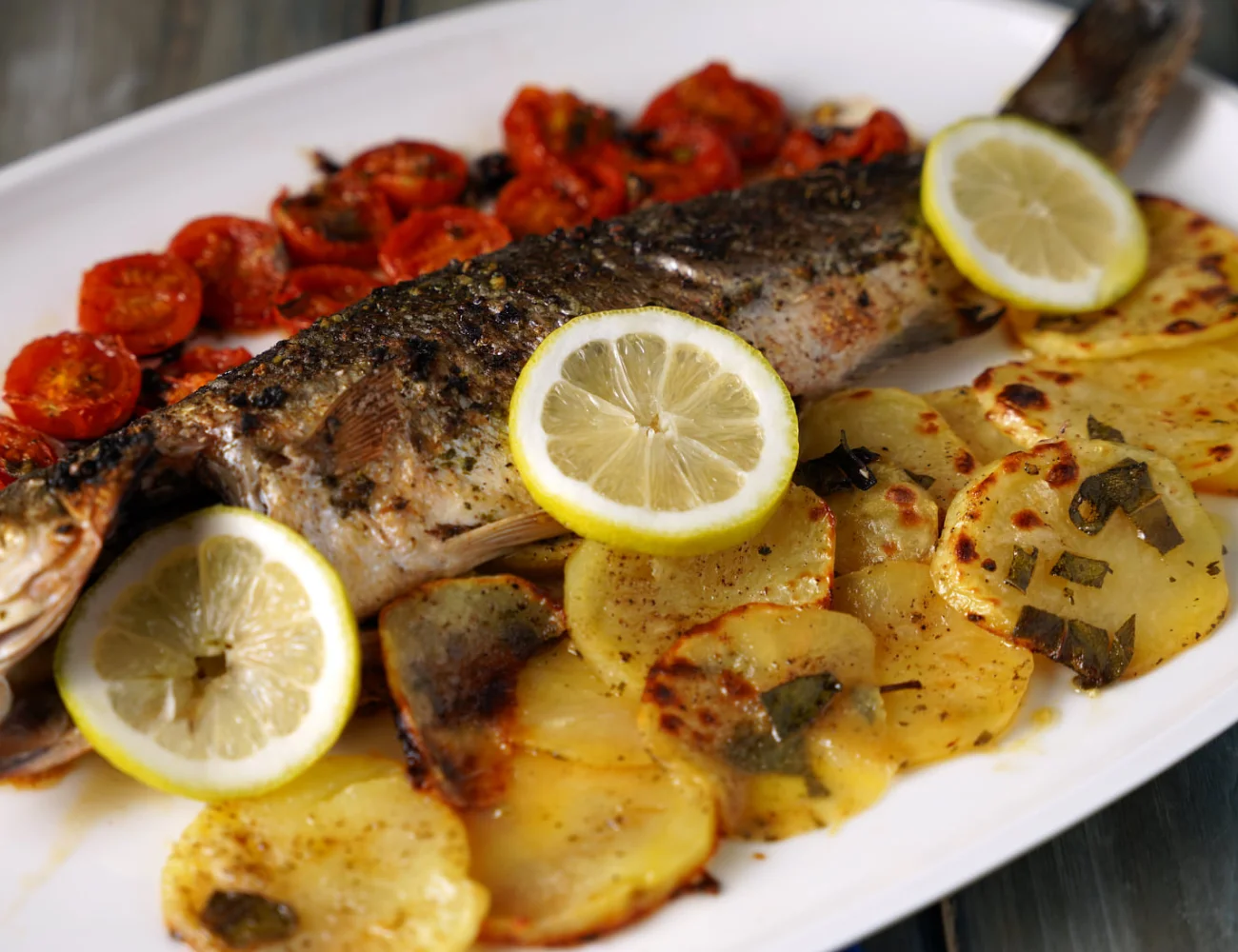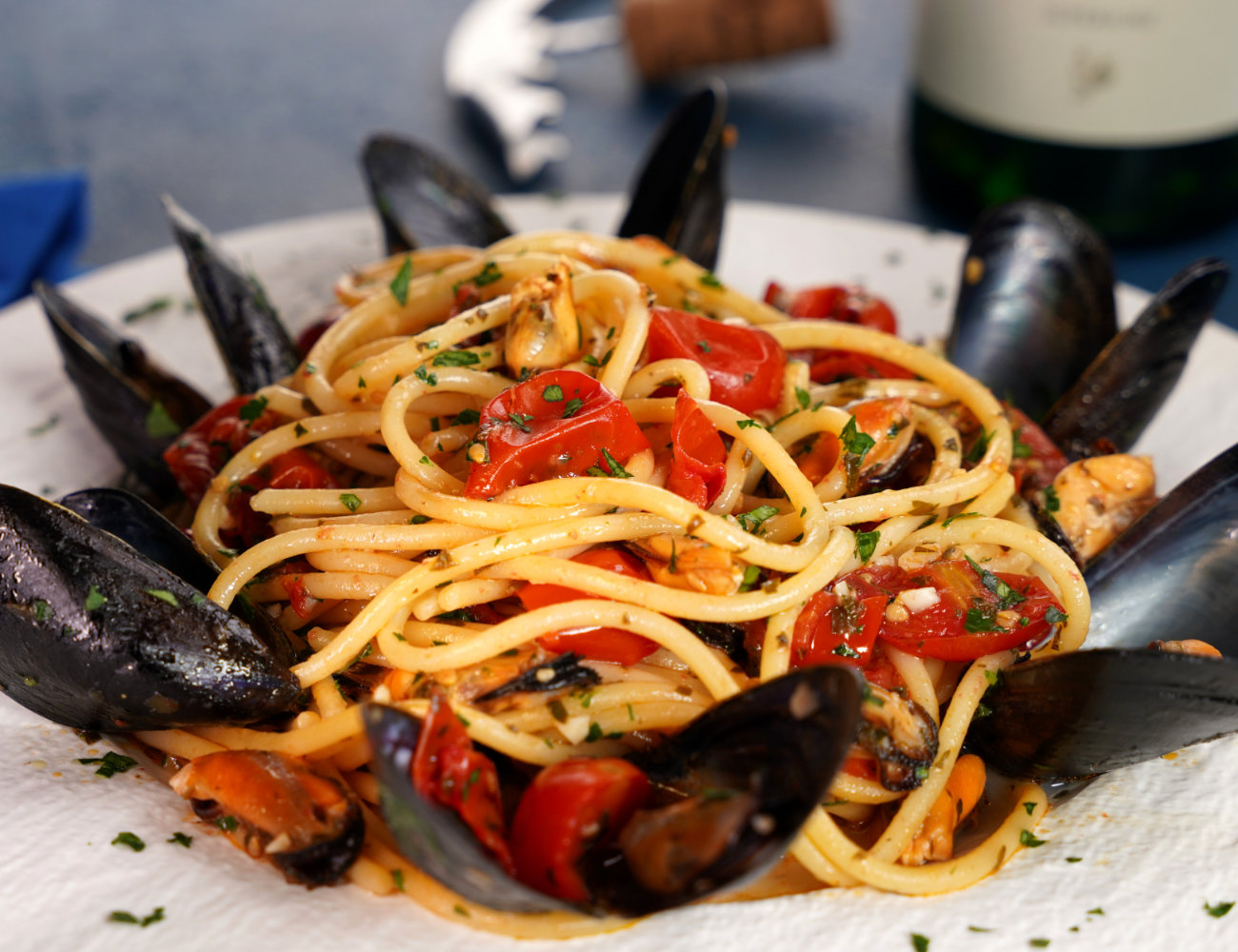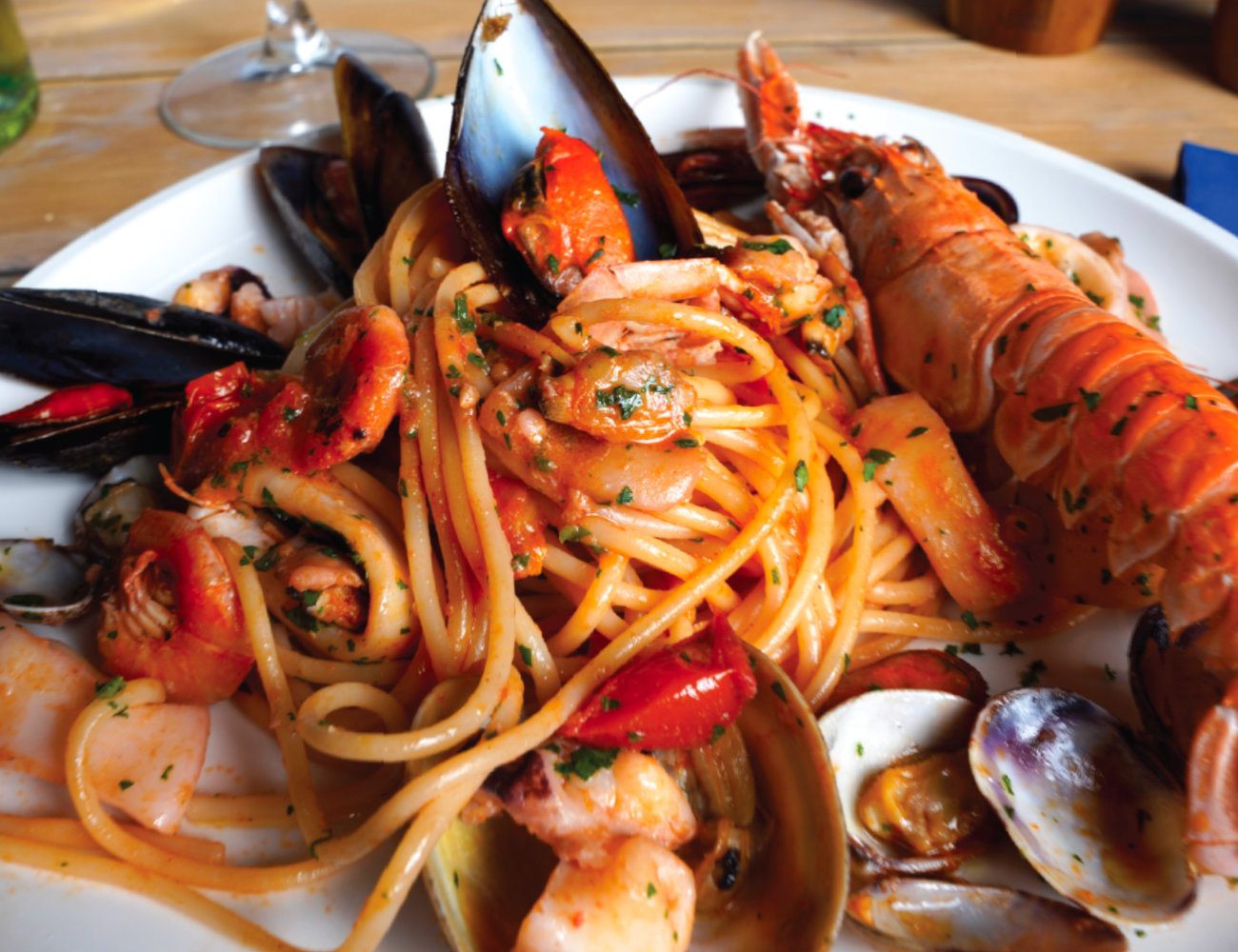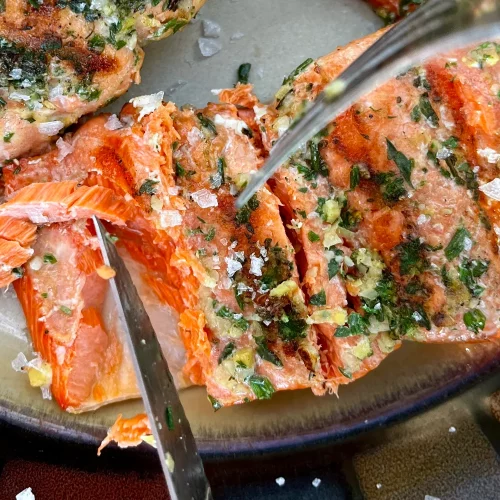Get ready to dive into a world of flavor with Italian Grandma Lulu’s Herbed Salmon recipe. This dish, perfected over the years, is a testament to Nonna Lulu’s culinary prowess and her knack for blending traditional Italian ingredients with a twist. The secret weapon? Ginger! Not your typical Italian ingredient, but trust us, it’s a game-changer.
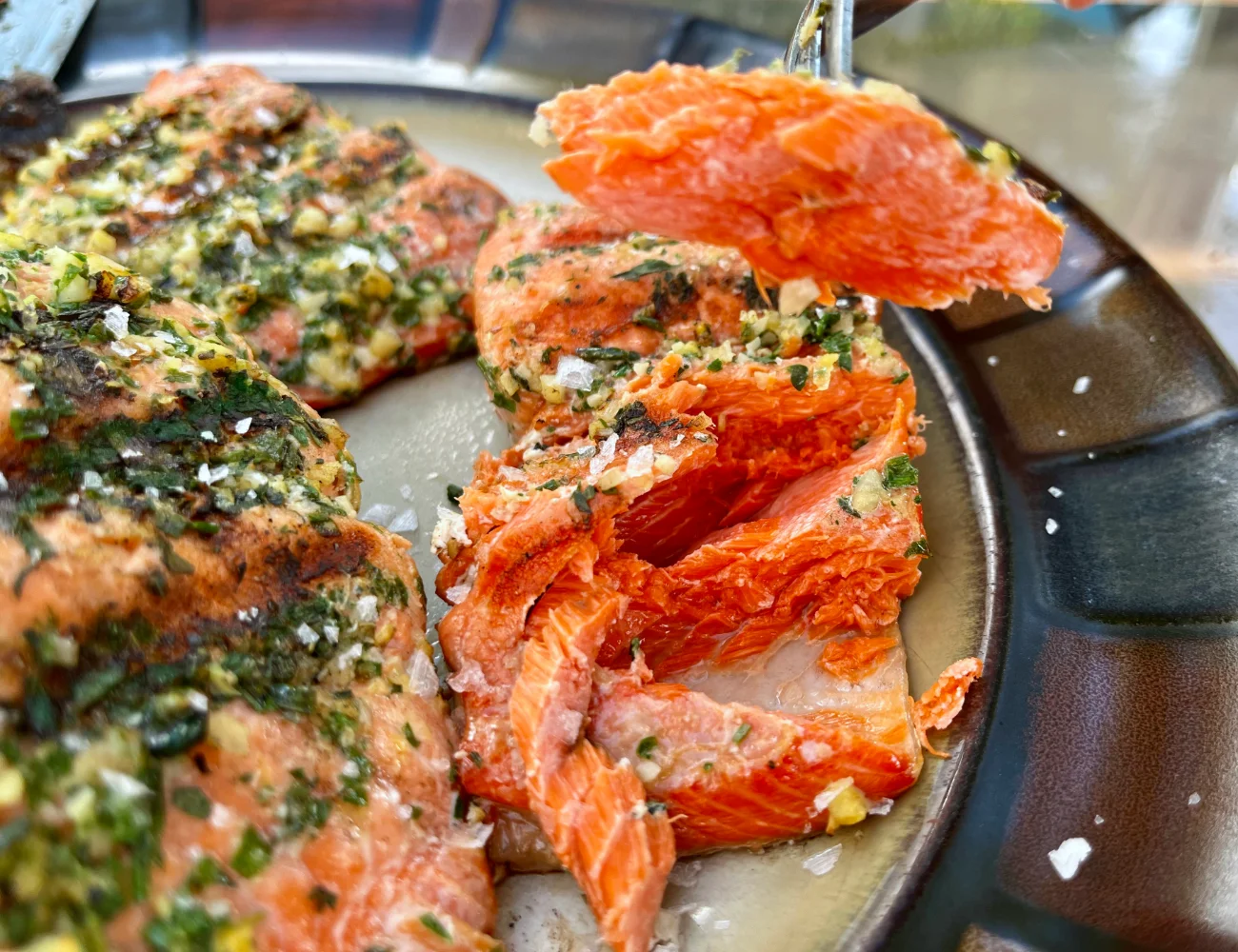
Salting Salmon
- Salting Before Cooking: If you salt your salmon about 15-20 minutes before cooking, it can help to season the fish and improve its texture. The salt initially draws out some moisture, which then gets reabsorbed, helping to season the fish throughout. This can also result in a firmer, more succulent texture. This is the strategy that Nonna Lulu uses to salt her salmon for this dish.
- Salting Just Before Cooking: If you prefer, you can also salt your salmon just before you cook it. This will season the surface of the fish, which can help to enhance the flavor of the crust if you’re searing or grilling the salmon.
- Salting After Cooking: Finally, you can also salt your salmon after it’s cooked. This will provide a burst of flavor on the surface of the fish, but won’t season it throughout or affect its texture. We usually add a pinch of Maldon Sea Salt Flakes (affiliate link) to finish our cooked salmon!
In general, when to salt your salmon can depend on personal preference and the specific recipe you’re using. Some people prefer to salt their salmon well in advance of cooking, while others prefer to salt it just before or even after cooking.
Better to Cook Salmon at Room Temperature!
Letting salmon come to room temperature before cooking can help it cook more evenly, similar to steak. This is because when the fish is at room temperature, the heat from cooking penetrates to the middle more easily.
Here’s a general guideline:
- Remove from Refrigerator: Take the salmon out of the refrigerator about 15-20 minutes before you plan to cook it.
- Don’t Leave Out Too Long: However, you should not leave the salmon out at room temperature for too long for food safety reasons. According to the U.S. Food and Drug Administration, perishable food should not be left out of the refrigerator for more than 2 hours (or 1 hour if the temperature is above 90°F).
- Cook Thoroughly: Regardless of whether you let your salmon come to room temperature before cooking, make sure it’s cooked thoroughly before eating. The FDA recommends cooking fish to an internal temperature of 145°F.
Remember, these are general guidelines and the best approach can depend on the specific recipe and your personal preference.
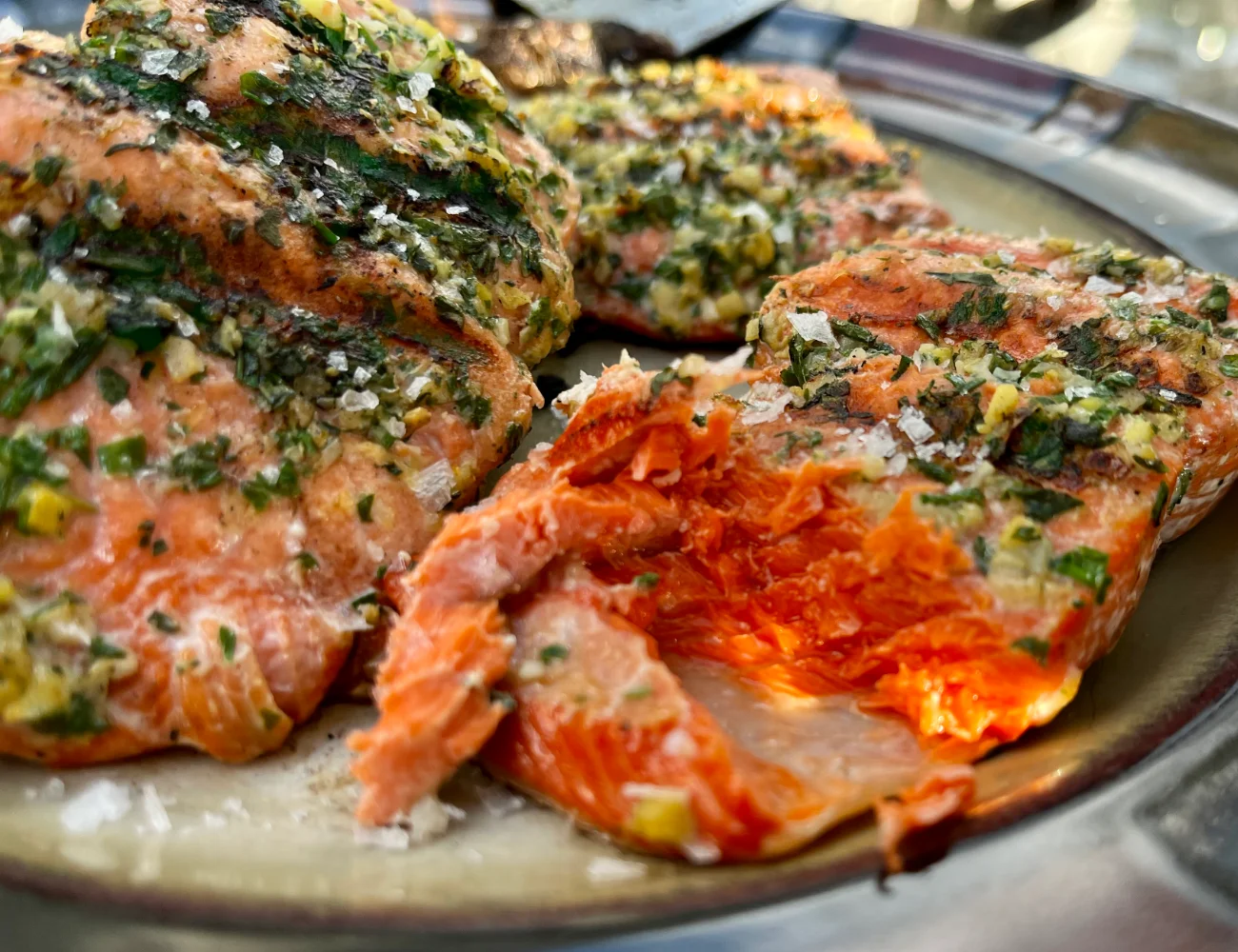
Grilling Salmon: Tips
When grilling salmon fillets, it’s generally recommended to start with the top-side down (skin-side up) first. Here’s why:
- Better Presentation: The first side that you cook tends to look better because the grill is clean and at the right temperature. Since the top side of the salmon is usually the side that’s presented, you’ll want it to have those nice grill marks.
- Easier to Flip: Salmon skin can help hold the fillet together and prevent it from falling apart. By starting with the top-side down, you can flip the fillet once and then leave it skin-side down for the rest of the cooking process.
- Crispy Skin: If you like crispy skin, leaving the skin-side down for the majority of the cooking time can help the skin get nice and crispy.
Remember to oil the grill grates well before adding the salmon to prevent sticking, and try to flip the salmon only once to keep it from falling apart. The general guideline for grilling salmon is about 3-4 minutes per side, but this can vary depending on the thickness of the fillet and the heat of the grill.
Products We Use with Salmon Recipes
Digital Meat Thermometer (Dual Probe): Shop it on Amazon
In our experience, people have the tendency to overcook meat and fish like salmon as much as they undercook it! So, for both food safety and food tastiness, it’s best to use a thermometer.
This thermometer has two probes that you can leave inserted inside the meat or fish—even as it is cooking in the oven or on a grill! You can set each probe to the desired temperature and the timer will go off when that temperature is reached. Recommended temperatures based on the type of meat or seafood and your desired doneness are based on FDA recommendations. Fantastic!
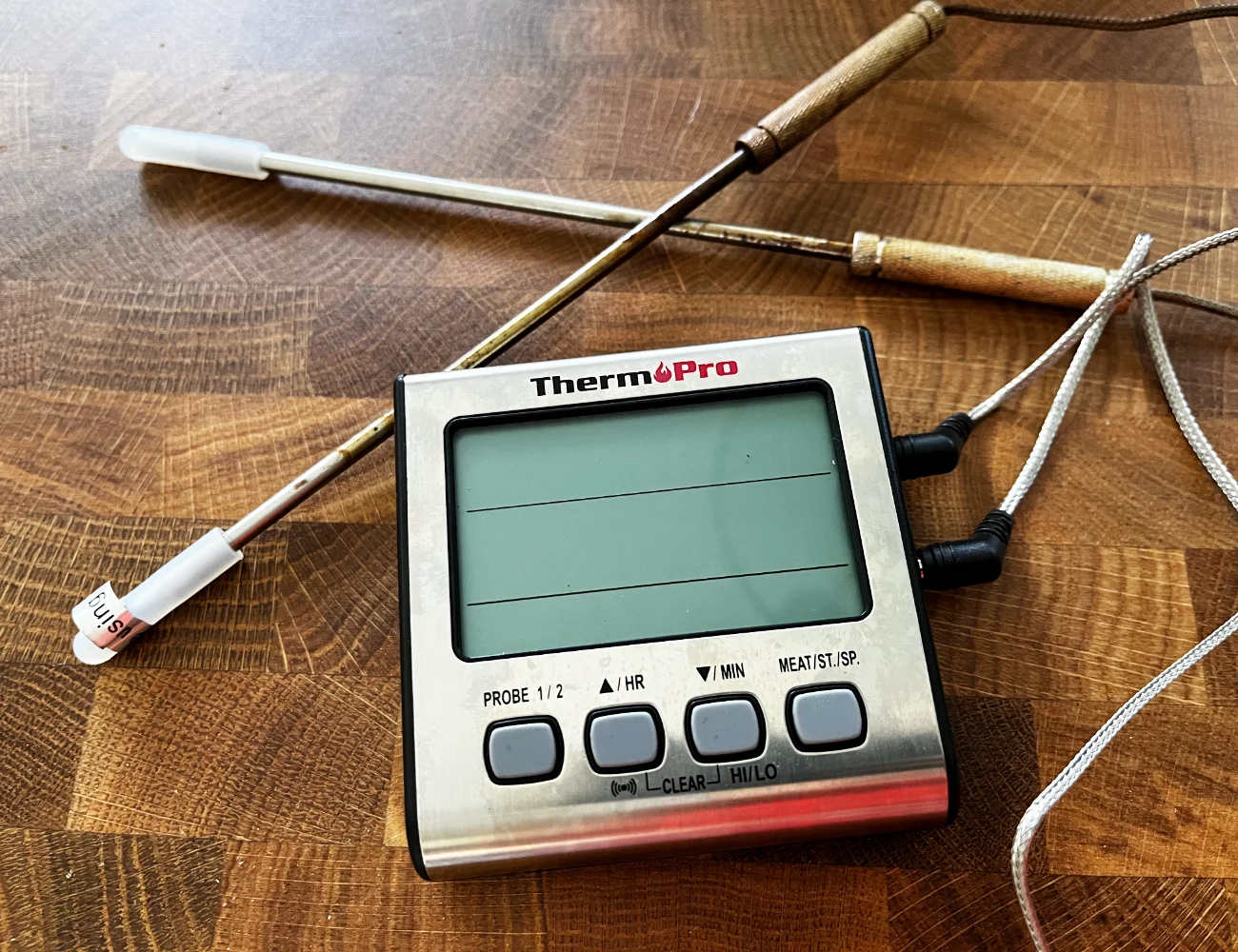
Maldon Sea Salt Flakes (affiliate link): Shop it on Amazon
Don’t let anyone tell you that all salt is the same. This flake sea salt is pure and natural with no additives. It has the perfect taste and texture for finishing steaks and cooked fish.
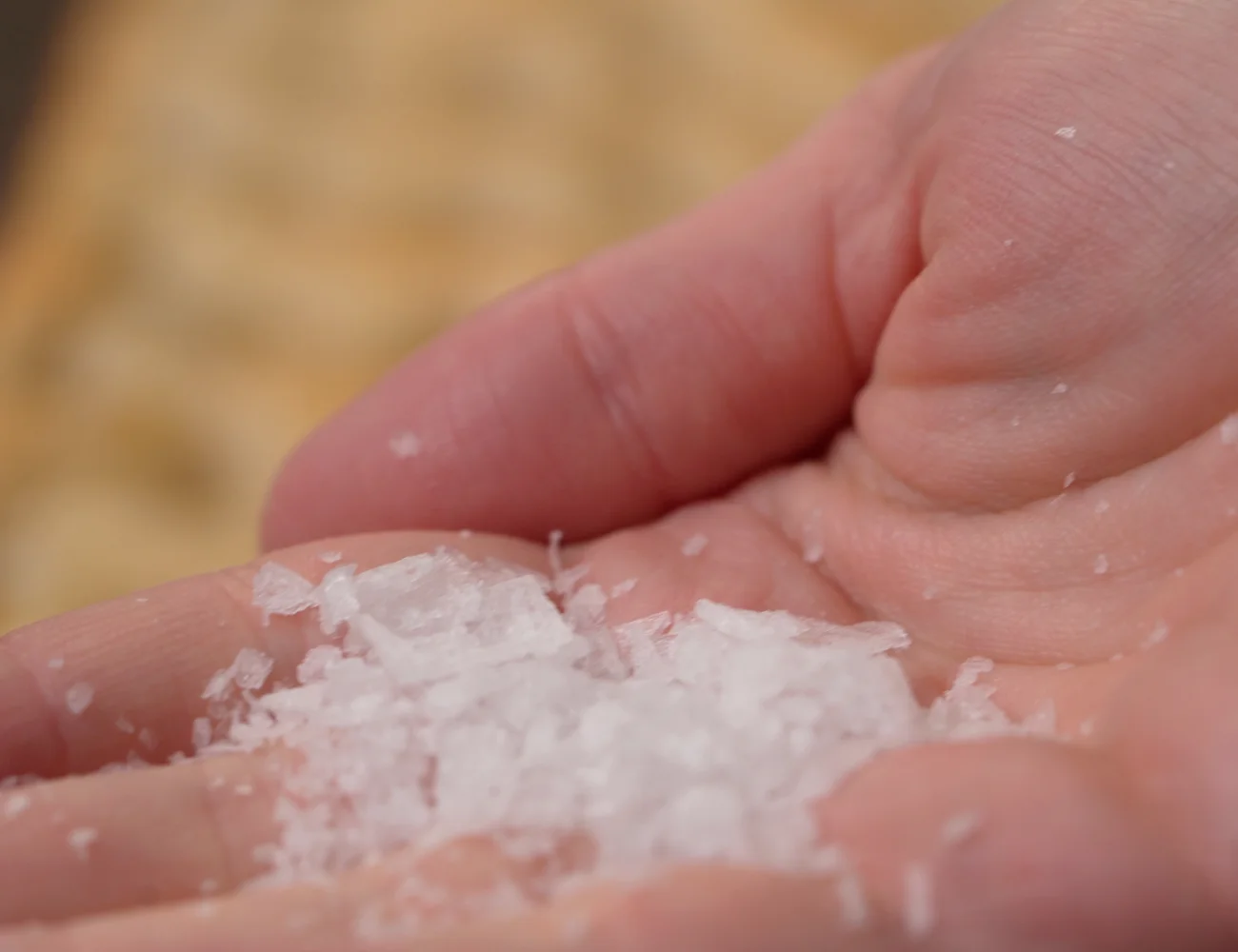
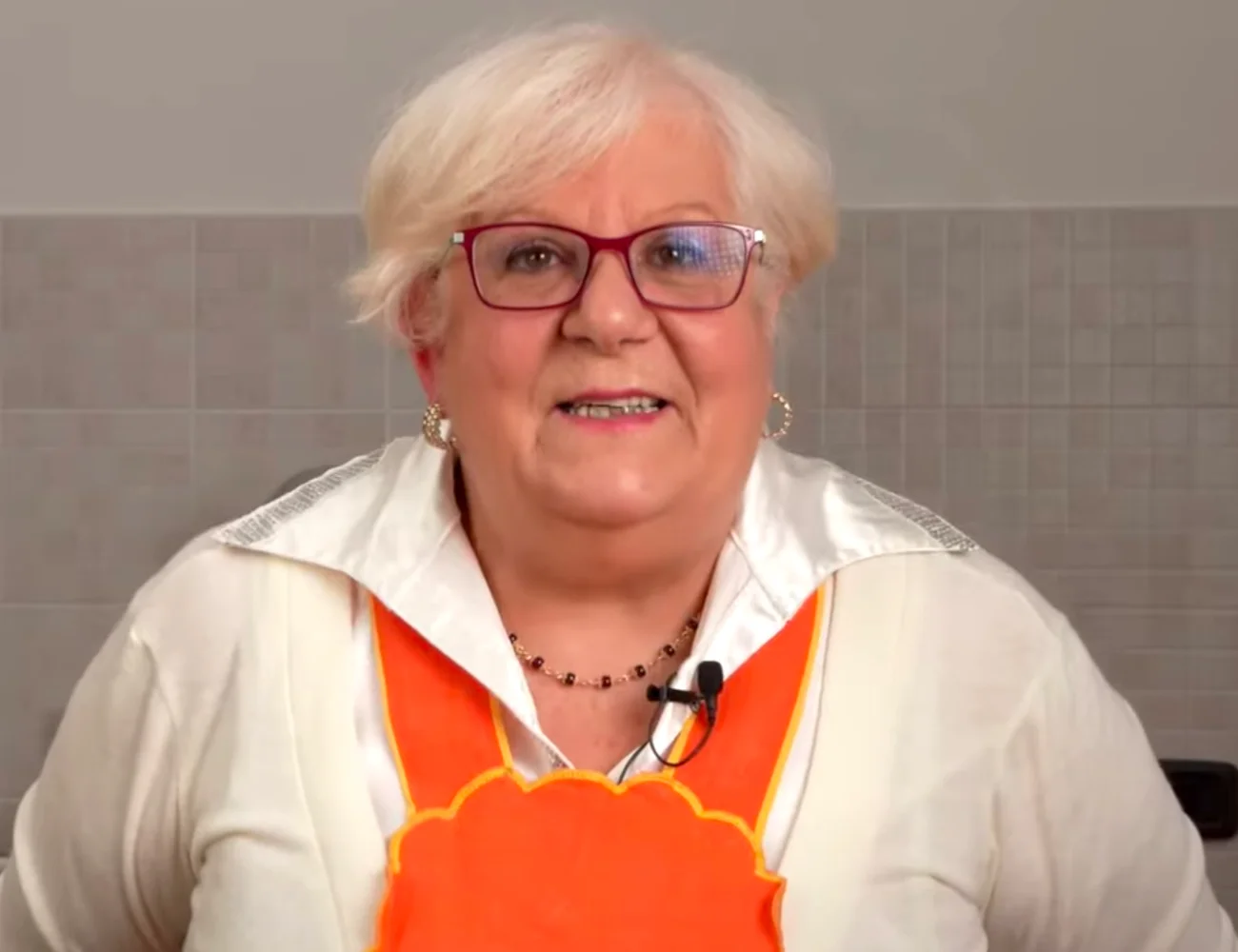
And there you have it! Nonna Lulu’s Herbed Salmon is a dish that promises a burst of flavor with every bite. The ginger adds a unique twist that truly elevates the dish. So, why not give it a try? Your taste buds will thank you. Buon appetito!
Video Recipe?
We don’t yet have a video recipe for this dish. Instead, check out our recipe for another traditional Italian fish dish: Baked Sea Bass from the Italian island of Sardegna!
Subscribe to our YouTube Channel
More video recipes? Subscribe to our YouTube Channel (it’s FREE) and click the bell to get notifications when we release a new video recipe!
Our Summer Pasta Cookbook!
More Seafood Recipes!
As an Amazon Associate, we earn from qualifying purchases. What does this mean? At no extra cost to you, PIATTO may earn a small commission if you click the links and make a qualifying purchase.
Nonna Lulu’s Zesty Herbed Salmon Recipe
Equipment
- 4 sheets of parchment paper if baking the fish in the oven
- 1 meat thermometer (optional)
Ingredients
- 4 fillets salmon
Herb Mix
- 2 cloves fresh garlic minced
- 1 handful chives minced
- 6 sprigs fresh thyme minced
- 1 tbsp lemon zest from about one lemon (save the juice!)
- 1 inch fresh ginger (optional) zested
- 1 lemon juiced
- 4 pinches fine salt; or to taste sea salt or kosher salt
- black pepper to taste
- 4 drizzles olive oil extra virgin
Instructions
Prepare the Herb Mix
- Finely mince together all of the aromatics: garlic, chives, thyme, lemon zest and ginger.
Prepare the Salmon
- Remove salmon fillets from the refrigerator about 20 minutes before you plan to cook it. Salt and pepper the tops of the salmon fillets.
- Distribute the herb mix evenly between the salmon, coating the top of each filet. Add a drizzle of extra virgin olive oil and a squeeze of lemon juice to the top of each fillet as well.
Let Salmon Rest at Room Temperature
- Let the salmon rest at room temperature for about 20 minutes. The 20 minutes it takes to bring the salmon to room temperature is the right amount of time for the herbs to season the salmon as well.
Grill or Bake the Salmon
- To Bake: Place each herbed salmon fillet on a piece of parchment paper large enough to fold over and seal. Fold the parchment paper over the salmon, and cinch the paper together by folding it over itself along the edges.Bake the salmon fillets on a baking sheet at 400° Fahrenheit (200° Celsius) in a pre-heated static oven. Bake them for about 12-15 minutes, depending on the thickness of the salmon. Generally, you want to aim for an internal temperature of 145° degrees Fahrenheit (63° degrees Celsius) as recommended by the FDA.
- To Grill: Cook each side of the salmon (starting with the skin-side up) for 3-4 minutes. Generally, you want to aim for an internal temperature of 145° degrees Fahrenheit (63° degrees Celsius) as recommended by the FDA. Cook times depend on the thickness of the fillet.
Notes
- Better Presentation: The first side that you cook tends to look better because the grill is clean and at the right temperature. Since the top side of the salmon is usually the side that’s presented, you’ll want it to have those nice grill marks.
- Easier to Flip: Salmon skin can help hold the fillet together and prevent it from falling apart. By starting with the top-side down, you can flip the fillet once and then leave it skin-side down for the rest of the cooking process.
- Crispy Skin: If you like crispy skin, leaving the skin-side down for the majority of the cooking time can help the skin get nice and crispy.

